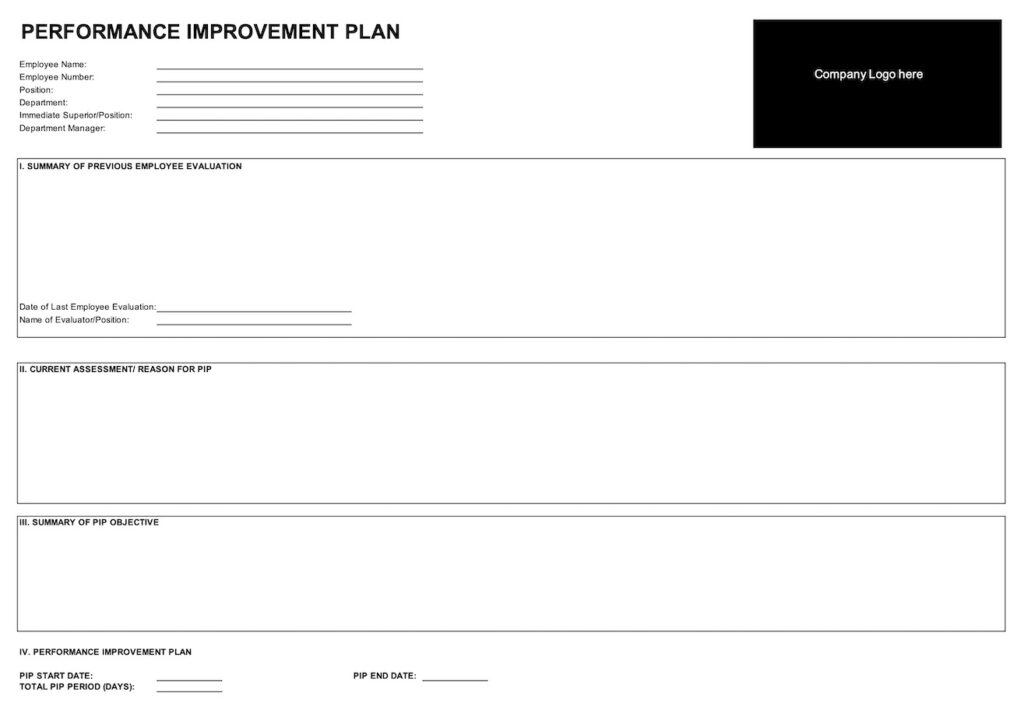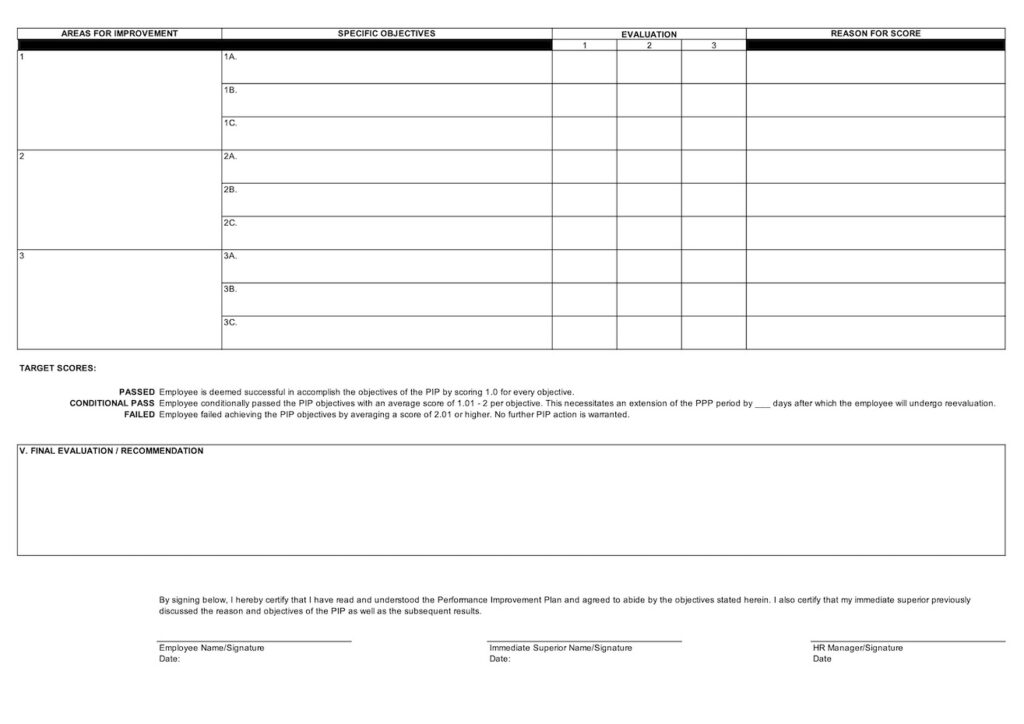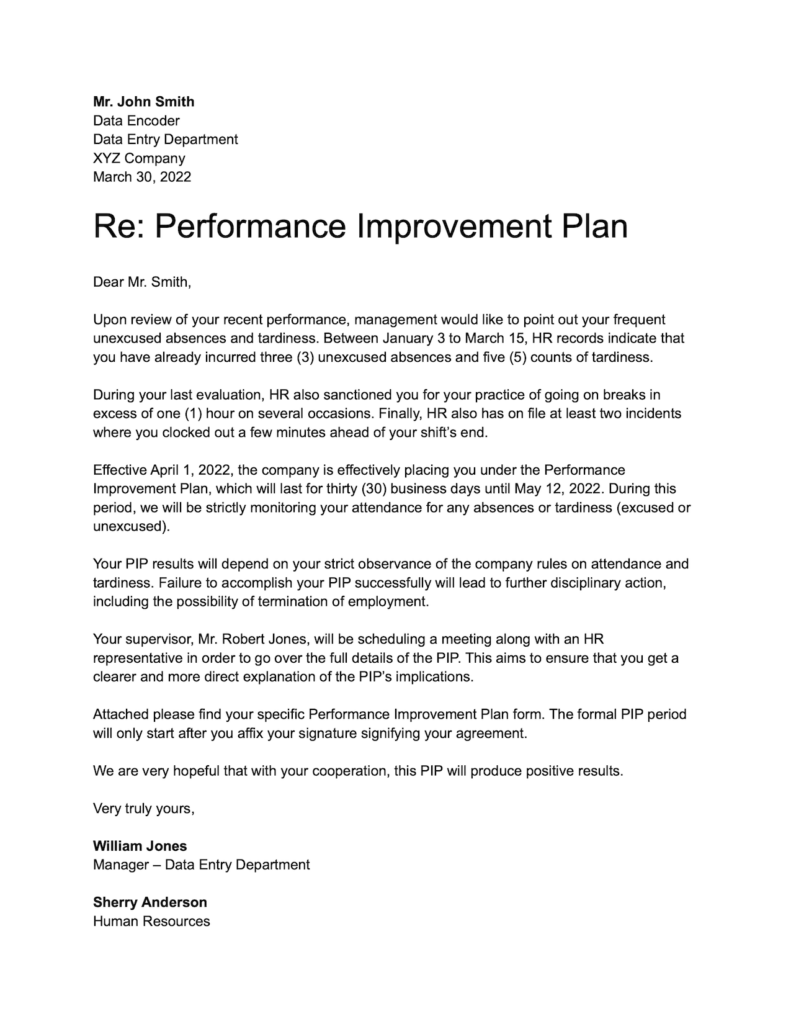There are many reasons why employees do not always meet their objectives. Health issues, stress on the job, or friction with superiors and co-workers are some of the factors that lead to poor performance. When faced with struggling workers, HR managers face a difficult decision. Should they immediately cut them loose to make way for new employees? Or, should they explore avenues that can help them bounce back? For the latter option, implementing a performance improvement plan (PIP) gives both parties a formal approach to try and make things work better.
According to the American Psychological Association, the ongoing pandemic was responsible for increasing burnout rates among workers in 2021. In its 2021 Work and Well-Being Survey, eight out of ten American workers reported work-related stress. This led to a number of negative effects on their job performance. They include a lack of interest in the job (26%) as well as a lack of effort (19%). Others also reported cognitive, emotional, and physical fatigue.
Table of Contents
Given Every Opportunity To Succeed
Companies usually provide their workers every opportunity to succeed in their line of work. This includes the provision of productivity and communication tools that make it easier for a team to onboard, align, and collaborate. In addition, managers usually allocate a significant part of their time to provide guidance to their team members and even coach them in certain situations.
Unfortunately, work is just part of the human experience. When other factors such as poor health (physical or mental), problems outside the office, financial issues, and even romance issues take over, work often suffers. In some cases, employees realize that they are a bad fit in their current job. Often, they try to make it work through sheer effort. However, things don’t always work out. In cases where efforts to get productivity back on track fail, the performance improvement plan can help turn things around.
What is a Performance Improvement Plan?
Of course, a performance improvement plan doesn’t work like a silver bullet that turns errant employees back into productive workers. It does, however, provide both employee and company a formal rescue plan to salvage the relationship.
Simply put, the PIP is a formal document that outlines the processes designed to improve a worker’s unsatisfactory performance. This document specifies the areas where the worker needs to improve in order to continue working for the company. The PIP then outlines the measurable tasks the employee needs to complete satisfactorily. In order to determine the result of this effort, the PIP includes a defined timeline in which to complete the tasks and the target objective.
Finally, the performance improvement plan also states explicitly the consequences. Succeeding to accomplish the PIP tasks can mean that the employee can rejoin his team and resume regular work. On the other hand, failure to do so means further disciplinary actions such as suspension or even termination from service.
Do Performance Improvement Plans Work?
Keeping employees engaged remains a challenging task for most HR managers. According to a 2018 Korn Ferry survey, 33% of workers looking for a new job are simply bored with their current position. Another 24% said that the company’s culture and values do not match their personalities. Issues like this will definitely affect overall productivity, but they can be addressed by reevaluating the workplace and making it more engaging to all employees in general. Consequently, PIPs should remain a last resort and not the frontline solution to increase employee productivity.
At the least, performance improvement plans provide a formal framework for an employee’s rehabilitation plan. The document clearly identifies the subject’s deficiencies in work and provides a plan of action in order to address these issues. Then, the PIP also documents the evaluation results and provides the recommendation for the next step. Throughout each stage, the employee is kept informed of what’s happening. If nothing else, the employee in question can appreciate the transparency of information and clarity of purpose.
Is the Performance Improvement Plan Bad?
While the intention is to provide an opportunity for an employee to rebound from a series of unsatisfactory performances, some might view the PIP as a precursor to getting fired. They see a PIP as legitimizing a grievance against an employee which gives management the basis for termination.
However, implementing a performance improvement plan in order to coax an employee to do better is a great way to fix an issue. The PIP crystallizes the specific shortcomings of the erring worker. It also includes a plan of action that addresses the company’s concerns. As long as communication remains direct and honest, the PIP can actually prove to be a win-win scenario for both employees and employers.
How Long Should a Performance Improvement Plan Last?
A performance improvement plan should have a specific timetable in mind in order to remain measurable. Typically, a PIP evaluation period can be 30 day performance improvement plan, 60 day, or 90 day improvement plan with check-in periods in between. During these check-ins, the supervisor and an HR representative will sit down with the employee and give a progress update.
At the end of the PIP period, HR will make a final recommendation based on the results. Together with the employee’s immediate superior, they will share the results and discuss the corresponding decision.
How to Write a Performance Improvement Plan
When presented to the employee, a formal performance improvement plan usually consists of a cover letter and the PIP form. The former provides a short summary of why a PIP was warranted. It should also contain a quick roundup of the areas for improvement covered by the PIP as well as the required timetable.
Meanwhile, the latter is an individualized form that serves as a formal evaluation scoresheet for the PIP. For every improvement area, a corresponding list of specific target objectives will be listed along with spaces for the eventual scores. This form will keep track of the employee’s performance during the specified PIP period.
In addition, the PIP form might also contain a section on what previous interventions or actions were made with the employee prior to the PIP. This provides the information that the PIP was only implemented after earlier actions were unsuccessful in addressing the listed issues.
Performance Improvement Plan Form Template
When developing the Performance improvement form, ensure that all relevant details are contained in the document. This can help the recipient understand the situation better and accept the tasks needed to accomplish the PIP successfully.
Below are some of the suggested information needed in a standard PIP form:
Employee’s Name and Employment Information. This documents the employee subjected to the PIP. It also includes other unique employee identification data such as position, employee number, and department.
Employee’s Direct Chain of Command. This establishes the employee’s direct superior and department manager. They are identified as the ones to implement the PIP and monitor and grade the results.
Summary of Previous Employee Evaluation. This is a short summary of the employee’s last periodic evaluation. This establishes the person’s record and behavioral benchmarks prior to the current evaluation that led to a PIP.
Current Evaluation/Reason for PIP. This section provides the summary of why the employee is now undergoing a PIP. The reasons included here should always be clear and comprehensive.
Summary of PIP Objective. This provides the general objective of the PIP. It states the general objective of the PIP with reference to the employee’s conditional status.
Performance Improvement Plan. This is the main table that will receive the periodic inputs from the evaluating team. It includes the specific objectives, targets, and scores. A guide to the scoring system should always be present.
Final Evaluation/Recommendation. This area contains the final report pertaining to the employment’s PIP performance. It should state clearly if the employee failed or passed the PIP. It should also clearly state the direct consequence of the final result.


Performance Improvement Plan Sample Letter
When issuing a PIP to an employee, make sure you have all the information available for them to read. Nothing will complicate a PIP further than the lack of information or the presence of inaccurate, false, or misleading information in the letter. These are the things that employees will pounce on when they file a counter-complaint.
Get it Right Before Sending It Out
First and foremost, ensure that the employee information mentioned in the PIP is 100% accurate. It’s not just the work performance summaries or specific incidents highlighted, but even the basic ones such as the name, position, employment record, 201 file, etc. While these clerical errors are easy to correct once identified, they can set the PIP period further than planned.
Next, get all the details accurate and documented. When citing the employee’s drop in sales numbers, it’s better to provide the person’s historical data set against the periodic targets. When mentioning an employee’s failure to deliver output, mention which projects had delays because of their missing contribution. Employees fighting the PIP can point to these vague or incomplete recollections as just an attempt to coerce them into resigning instead of a genuine concern to improve.
Finally, document the acceptance or receipt of the PIP once delivered. The lack of a receiving copy can prevent the implementation date from officially proceeding. It’s not enough to hand over a PIP to an employee. Like any official correspondence, you will need the recipient to sign an acknowledgment.
A PIP Sample Letter

Does a Performance Improvement Plan mean I’m Getting Fired?
Many PIP recipients will accuse HR and their immediate superiors of setting an arbitrary but high target that is nearly impossible to achieve as their PIP objective. Not completing this objective can lead to further disciplinary action, including outright termination.
In effect, many employees who find themselves out of a job will claim that whatever the outcome of the PIP, HR will still fire them anyway. In addition, HR only used the PIP to protect management from accusations of wrongful termination.
Of course, there will always be errant companies that will wrongly utilize a PIP before firing an employee they don’t want anymore. However, there are also companies that used PIPs to create positive effects. By getting a clear mandate on which areas need to improve, employees can now focus on working better. During the course, many will also realize that they might be square pegs in a round hole as far as the job is concerned. Rather than continue working in a job that does not suit their strengths, some workers might consider proactively quitting instead.
How Should You React When You Receive A Performance Improvement Plan?
Receiving a PIP notice, especially when it came from out of the blue, can be a very unsettling experience. Even before opening the letter and reading the contents, employees tend to assume the worst.
However, it would be a really good idea to sit down and assess the entire situation completely before making a decision regarding the matter. Many places all over the world give legal authority to employers to set their own rules regarding the management of their workforce. Rather than err on the wrong side of caution, it might be better to voluntarily submit to the process and show good faith. Otherwise, you risk tainting what was once a mutually beneficial business relationship.
Upon receipt of a PIP, you may want to consider the following actions:
✅ Make an Honest Self-Assessment
Read the performance improvement plan carefully and note what it says about your work performance. Afterward, make a very honest assessment if what the PIP says is true about your recent output. Are your sales numbers down for consecutive months now? Do you have problems coming in at work? If you think that the PIP may have a legitimate reason to exist, then it’s more likely a genuine call to action for improvement.
However, if you do feel unnecessarily singled out, or accused of something that you had nothing to do with, you might want to pause. Getting advice from a labor counsel or your trade union can help clarify the matter with your HR.
🫶 Approach the PIP in Good Faith
If there is a legitimate reason for the PIP, and you agree that you still have plenty of room for improvement, that should be a good starting point for cooperation. Let HR walk you through the objectives and the set targets of the PIP. If you have any questions or concerns, especially about the set goals, feel free to discuss the matter further with HR. Your positive cooperation and your willingness to improve may help make your PIP goals a bit easier to accomplish.
In case you disagree with the PIP, do air your aide with HR or your immediate superior. Sometimes, things do fall through the cracks, and your PIP may be based on a lack of evidence instead of having the proper documentation. For example, a PIP on inaccurate or error-filled reporting can be corrected by supplying the missing paperwork. Or rechecking reimbursement records can clear up what seems to be an excessive number of items charged to the company.
📄 You Should Document the Process As Well
Once the PIP is in motion, all your activities may now be more closely scrutinized. Any incidents supporting the reason for your PIP can show up in your final report. This is why you should document your activities as well. In cases disputes of certain events or reports happen, you also have your records to fall back on.
Keep notes on key dates of your PIP such as the actual start and end dates, plus dates of key milestones and accomplishments. If nothing else, this can actually help you stay on target with your rehabilitation plan.
💁🏽 Ask if You Can Get Help
Once you understand the terms and conditions of the PIP, you may want to approach the company and ask if there are tools and resources available for you in order to accomplish your PIP goals. Can you still attend your scheduled training dates? These can take away critical days which you need to hit your goals. Can you still use your tools of the trade like your company-issued car, smart device, or others? Do you still have access to the company database, especially client leads? It pays to ask, and even if the answer is no, you can still make preparations.
Benefits of the Performance Improvement Plan
Implemented correctly, the PIP can actually help bring positive change to an individual’s attitude at work. It also produces a few side benefits for both employees and employers:
💬 Encourages Honesty and Open Communication
Instead of a casual conversation filled with vague orders to “clean up your act,” a PIP squarely addresses the issues raised against an employee without any sugarcoating. It also means that management is seriously making its employees accountable for performing their duties and responsibilities.
🤝 Offers a Last-Ditch Option Instead Of Outright Disciplinary Action
A performance improvement plan gives both parties a last chance to make everything work out instead of just giving up outright. Providing employees with actionable targets gives them a chance to redeem themselves, which can be helpful for workers undergoing a series of bad breaks. When everything fails despite a PIP, both parties still receive a clear understanding of why things didn’t work out, which reduces bad blood.
🔒 Provides Company with Protection from Liability
For management, the PIP presents a documented attempt to correct or improve employee performance before taking further drastic measures. When the outcome fails the save the employee, the PIP helps provide companies with documented proof that both parties made an effort to work it out.
Final Words
Employers should never wield a performance improvement plan like an ax over people’s heads. Instead, they should apply the PIP in cases where employees need a clearer direction from management on how to improve their performance. In many cases, workers define their sense of purpose with work. Aligning your company’s vision with your seemingly-uninspired employees might help improve their engagement and can boost their productivity.
For employees, a performance improvement plan can be a genuine helping hand for improvement. Engaging with Human Resources on the details surrounding the PIP can help clarify the reason for this process. A good faith approach can also help both parties reach an understanding of the tasks and goals needed.
Like any special equipment, handle a performance improvement plan with care and use only as directed. This way, your company can reap the benefits without getting flak for the perceived downsides.







